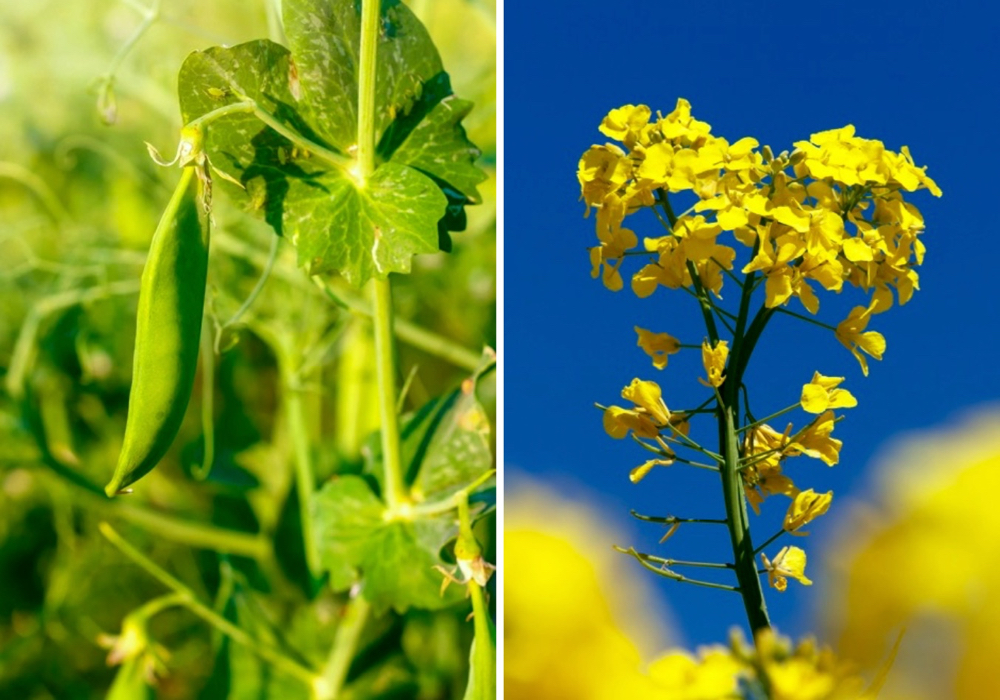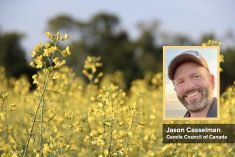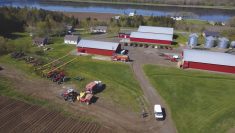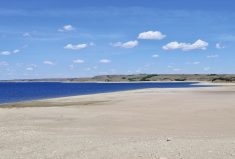Eric Bremer is leading a research project on intercropping in the Lethbridge area. Bremer was involved in intercropping research as a grad student back in the 1980s and jumped at the opportunity to look at it again with the support of Western Ag Innovations owner Ken Greer and a research grant from Alberta Pulse Growers and Alberta Agriculture and Forestry. Bremer started with canola-pea and canola-lentil intercrop trials two years ago under both drought and normal moisture conditions (trials supplemented with irrigation).
“Canola and peas grew really well together and the crops established well in 2018, but with the hot weather of southern Alberta, peas can be ready to harvest in mid-July, way ahead of the canola,” he says. So he switched to mustard for 2019. In 2020, Bremer hopes to have both canola-pulse and mustard-pulse intercrop trials.
Read Also
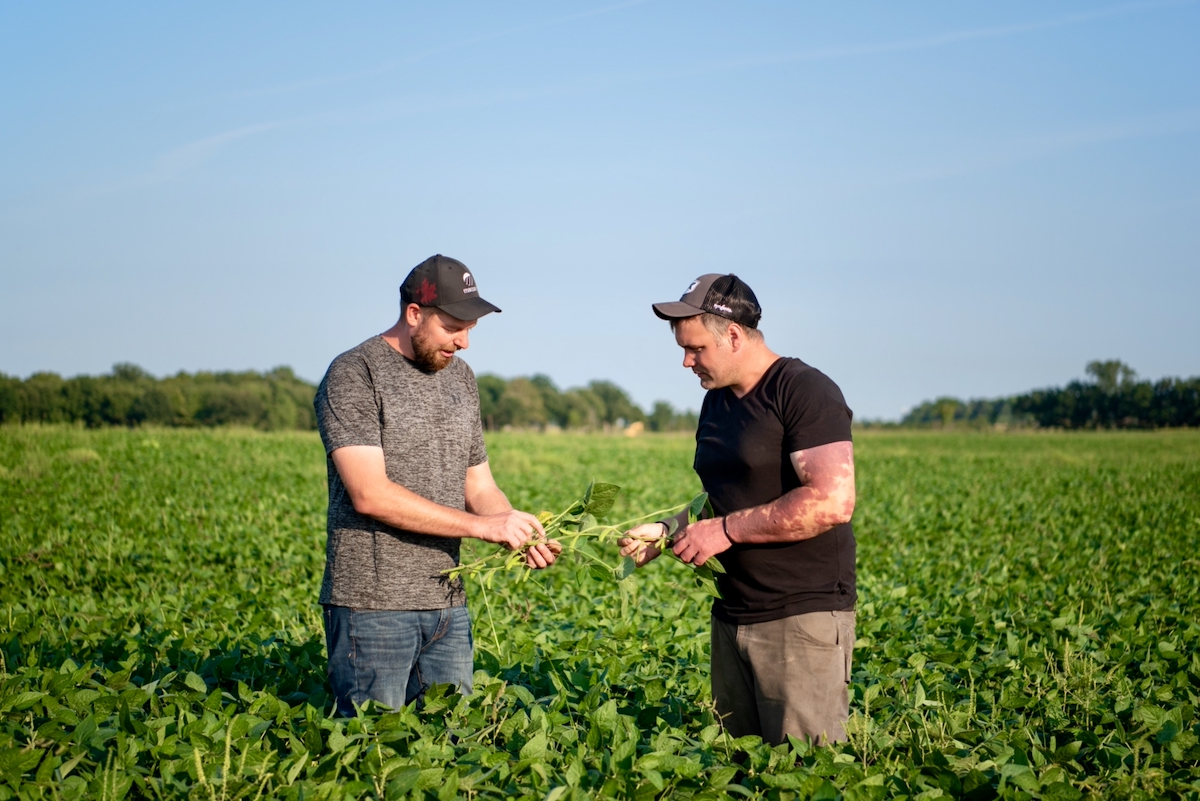
Ontario farmers partner for success
Ontario business partners, Matt Bergman and DJ Wassenaar, have been farming together for 10 years. Their focus on integrating unconventional…
For the canola-pea trials in 2018, Bremer seeded intercrop canola at 10 per cent, 30 per cent and 75 per cent of the rate used for his monocrop canola check. Pea and lentil seeding rates were 75 per cent or 100 per cent of the monocrop check. Nitrogen rates were 0, 50 and, for canola only, 100 kg/ha.
Monocrop pulses take up almost as much fertilizer as canola, Bremer says, but together canola takes up five to 10 times more of the available nitrogen than pulses do because canola is way more aggressive. “This is what we want because we want pulses to fix their own.”
For yield, Bremer says intercrop peas tend to yield better with the lower rate of nitrogen. “In a fair comparison, which is to compare the intercrop to the monocrops grown the way you normally would, then the total yield benefit from the intercrop in our trials has ranged from zero to 20 per cent.”
Bremer says farmers are showing more interest in intercropping as a way to reduce input costs and to get biology working better for them. “There’s a lot of interest in regenerative agriculture,” he says. “Put two crops together, and you have less disease overall and the oilseed crop is able to take advantage of the pulse benefits in that year, when they can be fully realized.” The intercrop also makes the pulses easier to harvest.
SERF intercrops canola with five different peas
Lana Shaw, research manager at South East Research Farm in Redvers, Sask., has been testing various intercrops over the past few years. In 2019, Shaw tried canola with five different market classes of pea to see which ones worked the best. She says the peas were very competitive with the canola, with no aphanomyces symptoms. The trial was seeded on May 10 and though the canola grew slowly at the start due to cool and dry conditions, the trials avoided frost damage and flea beetle damage. Overall the canola was later than the peas (which SERF trials have shown in the past) and this complicated harvest, yet Shaw says the lodging rating in the intercrops was almost halved — 6.7 out of 10 for monocrop versus 3.6 out of 10 for intercrop — when all varieties were considered. (The higher the number, the worse the lodging.)
In assessing the benefit of an intercrop, Shaw uses the term “land equivalency ratio” or LER. To calculate LER, add together the percentages of each crop yield compared to the monocrops. For example, if an intercrop produces 60 per cent of a monocrop canola yield and 40 per cent of a monocrop pea yield, the overall intercrop yield would be 100 per cent for an LER of one. “Anything over one reflects a higher level of productivity compared to monocrops,” Shaw says. “For profitability, the calculations are more complicated and of course depend on relative and changeable crop prices.”
The results
Here is Shaw’s quick summary of each pea type:
- Mosaic maple pea yielded more in an intercrop with 2.7 lbs./ac. of canola than it did on its own, but the canola only yielded three bu./ac. in that intercrop. The LER was 1.1 for the intercrop. In the trial monocrop checks, canola yielded 42 bu./ac. and maple pea yielded 40 bu./ac. The lodged maple peas were difficult to harvest for the intercrop, which had a lodging score of 7.9 out of 10, but the monocrop maple pea at 10 out of 10 was far worse. Intercropping worked the best with maple peas combined with canola, but a higher seeding rate of canola with that leafy Mosaic maple pea would likely be better.
- Marrowfat peas were easier to harvest in an intercrop, but the LER was below one.
- Dun peas had an LER of 1.06 and had reduced lodging in the intercrop compared with the monocrop (5.6 for monocrop and 2.0 for intercrop).
- Green pea monocrop lodging rating was 5.7 versus 1.25 for the intercrop, but the LER was 0.97.
- Inca yellow pea showed few advantages to intercropping, as it had little lodging and the LER for the intercrop was 0.98. Only the Inca yellow pea showed no practical advantages to intercropping with canola.
Pea results, overall, were better in 2019 than in 2018. The SERF location had bad aphanomyces in peas in 2018. “The pea monocrops were a failure that year,” Shaw says. “Pea-canola intercrops at least had some production, but not as much as mono canola with full nitrogen package. If we had top-dressed the pea-canola intercrop with nitrogen when it became apparent the peas were badly hit, I think it would have been a more productive intercrop.”

